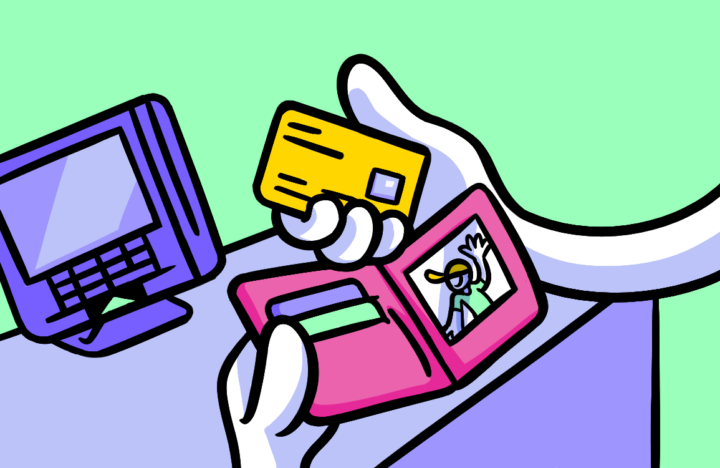Cut the Brand Awareness BS With These 6 Easy Steps
Measuring brand awareness is an important KPI to track. We’ve cut through all the BS and put together six solid methods and tools to make it deadly simple.
Why Brand Awareness Measurement Matters
The bottom line on this is… well, the bottom line. Money, baby! Measuring brand awareness helps bring in that revenue.
How? Well, you’ll get better campaign results because you’ll know your target audience and know how to speak more effectively to them.
Like the old adage goes, “Know thy customer like thyself.” William Shakespeare. But it’s better in the original Klingon.
And that has even more ripple effects.
The better your brand awareness, the more people are talking about you. That could mean an uptick in your conversations by 29%, depending on your brand’s space.
Better brand awareness also gets buy-in from those holding the purse strings — investors. Brand strength and name recognition is important among 82% of investors, especially when it comes to investing in a company.
All the Flavors of Brand Awareness
Like a Neapolitan ice cream, there are three main flavors or types of brand awareness: brand recall, brand recognition, and top-of-mind awareness.
Brand Recall
This is where someone can remember a brand without any kind of hint or prompt . Let’s say you need new running shoes. Then you come up with a few brands you could buy, like Nike or Adidas or New Balance.
Usually, a person can come up with a handful of brands when thinking about buying a particular product or service. The more into something someone is, the more they know the big brand players in that space. Like running shoes.
Brand Recognition
Brand recognition is what ties together brand recall… like shoelaces. You can’t recall a brand if you don’t recognize it.
But there’s one slight difference.

The famous Nike swoosh. (Photo Credit: Shane Aldendorff)
With brand recognition, you’re prompted into recognizing the brand, like seeing the Nike swoosh logo on a billboard. You’re able to ID a brand through a color, logo, or style. You immediately know it by sight.
Top-of-Mind Awareness
All this leads up the third type of brand awareness — top of mind. It’s the brands that pop into your mind when thinking about any given space, like running.
If a brand is in the top 3, the better its chances of being bought. Better yet if it’s the first brand that pops into mind, and hopefully the only one.
Retargeted ads and email campaigns can beam your brand directly in front of an audience. That keeps it stored in their memory banks.
6 Methods and Tools For Measuring Brand Awareness
So we got the three types of brand awareness. We know why it’s important. So now what?
Don’t fret, we got 6 methods and tools that’ll get you started.
1. Brand Awareness Surveys
We asked marketers what they can learn from a brand awareness survey… the number one answer: how to improve product positioning.
Okay, we didn’t ask a bunch of marketers. But we could have. You can also survey your audience and ask what they know about your brand.
Understanding how they perceive your brand allows you to craft stronger positioning that speaks more to them.
Our tool of choice for surveys: Helio.
You can send a multiple choice survey or a free response to a highly targeted audience that is familiar with your space.
COMING SOON: We’ll have some brand survey templates to get you going.
2. Social Media and Share of Voice
You’re probably somewhat familiar with Share of Voice and already know it’s not some new signing competition on TV. Although, it makes a good title for one.
Keeping your hailing frequencies on what people are saying online lets you know how well you’re doing in the market.
Here are a few tools to help monitor social chatter:
- Sprout Social. A social media management hub, where you can publish and track engagement across all your brand’s accounts. You can easily chart what people are saying and how they’re interacting with your brand’s social accounts. And it’s good enough for the Hooisers.
- Hootsuite. A tried and true social media management tool. You can also publish and track results. More importantly, you won’t miss a beat in any online conversations as the platform gives you a bird’s eye view of every account.
- Buffer. Another well-known social media management tool. This one is deadly simple to use with a clean interface. One advantage: a catalogue of content to help you get better at understanding your social presence.
3. Website Traffic
You built it. And they came. But did they stay? Or did they bounce? Did they even bother to click that shiny red button?
Understanding your website’s traffic is what answers those questions. Knowing those answers lets you make improvements. That could be the difference between someone bolting or converting.
These are our recommended tools to monitor traffic:
- Google Analytics. Still the number one tool in website traffic for marketers. Connects directly to your website. See how many visitors you get. Tracking movements from page to page. Understand where they came from. And how they’re engaging. Actionable data in a snapshot.
- Google Search Console. Hack your site’s ability to get searched. See what searches teleported visitors to your site. Better hone your content after to better match those searches. Also, check how Google crawlers search your site.
- SimilarWeb. Don’t just check up on you. Check up on your rivals. This free traffic analysis tool lets you peep at how your rivals are reaching out to their audience.
4. Brand Impressions
First impressions. Isn’t that what they say? Gotta make a good first impression.
Well, yes but this time we’re talking about the impressions whenever someone sees a brand online. Like a tweet, an ad, or an IG post. It’s all about them views.
There are two types of impressions:
- Served impressions. This is the most basic. Say an ad pops up on a page. That’s considered served whether it’s viewable on the page.
- Viewable impressions. 50% of an ad or post must be seen within the viewable window of a site.
Tools to help you monitor this:
- Google Ads. This platform lets you serve up your brand in any related searches for your product or service. You can run campaigns from here and see the impressions they get.
- Facebook Ads. Similar to Google Ads, but just within the Facebook ecosystem. Run campaigns. See the results.
- LinkedIn Ads. Same thing, but you guessed it? Just within the LinkedIn sphere of influence.
- Twitter Ads. See the pattern here? Same, just for the Twitters.
You can also monitor your social media posts that aren’t ad related from the tools we mentions in #2.
5. Search Volume
You can track how many times your brand, its products or services, and related keywords show up in search results.
Tracking this over time for your and your competitors gives you sight-beyond-sight into what’s driving traffic.
For this, your Sword of Omens are:
- Google Trends. Gauge interest in your brand over time. See where searches are taking place and what keywords are driving them.
- SEMRush. A keyword volume search. Get a snapshot of keywords you want to rank for. Check to see how your backlinks are performing. And also understand your SERPs (search engine results pages).
- aherfs. This toolset lets you do a site audit so you can optimize it. Check out how your competitors are performing. Learn what your audience is searching for. Rank your site against the rest.
6. Customer Reviews
Finally, there’s nothing like the time-tested method of customer reviews. Through these, you can understand your brand awareness and perception.
Here are a few ways to track reviews.
For software products:
- G2: Easily look up your product or service to read all the reviews out there, including video reviews. There’s also an average rating on things like ease of use, setup, and support.
- TrustRadius: A collection of vetted, unbiased reviews. Companies can’t game the review system. Reviews include pros and cons, as well as star ratings.
- Capterra: Provides a snapshot of all the reviews available for a particular product, dividing it into pros and cons. Easy to digest format on each review.
For services companies:
- Better Business Bureau : Been protecting consumer trust since 1912. An independent, non-profit rating and accreditation organization. Consumers can give reviews as well as file complaints against any business.
- Google reviews: Type in a business into Google Maps, and you’ll also see reviews for that business.
Brick & Mortar:
- Yelp: A dinosaur in tech that’s been providing people a way to review restaurants, stores, and other businesses online. Who among us hasn’t Yelped an eatery just to see if it’s any good?
Knowing More About Brand Awareness is Half the Battle
Measuring brand awareness is a critical step in making any improvements to your campaigns, content, ads, the marketing site, and even the product itself.
The easiest way to get started is with brand awareness surveys. So, once again, we’re going to recommend you pop over to Helio and get one going.
And don’t worry, you can get your Brand Analysis going with our easy peasy template.















